Understanding Stink Bug Smell: A Comprehensive Examination
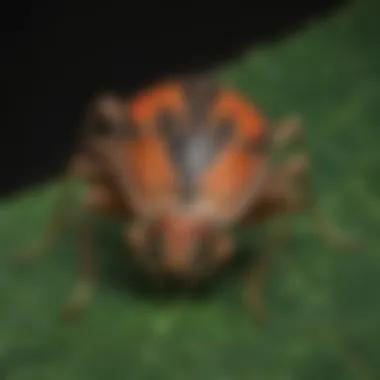

Intro
Stink bugs are a common household nuisance. They are not just irritating, but they also carry a distinct odor that can disrupt the comfort of any home. The smell they emit is a defense mechanism, originating from a gland situated in their thorax. When threatened or disturbed, these insects release a pungent odor intended to deter predators. This article will help you understand the complexities surrounding stink bug smell, identifying the types of stink bugs, the reasons for their odor production, and how homeowners can manage infestations effectively.
Pest Identification
Detailed descriptions of common pests
Stink bugs belong to the family Pentatomidae. The two most prevalent species in North America are the Brown Marmorated Stink Bug, Halyomorpha halys, and the Green Stink Bug, Chinavia hilaris. The Brown Marmorated Stink Bug is easily recognizable by its distinct brown coloration and shield-like shape, typically measuring about 0.5 inches in length. Meanwhile, the Green Stink Bug presents a bright green color, which can aid in visual identification. These pests often congregate in groups and are attracted to warm, sunny areas.
Signs and symptoms of infestations
Detecting an infestation early can help homeowners mitigate the unpleasant odors associated with these pests. Common signs include:
- Visual sightings of stink bugs, particularly around windows or doors.
- A noticeable odor without visible bugs, indicating their presence nearby.
- Small holes in plants or produce, as they often feed on vegetation.
Proper identification is crucial, as various species can have different behaviors and management needs.
Prevention Strategies
Home maintenance tips for pest prevention
Preventing stink bugs requires a proactive approach. Here are some strategies:
- Seal entry points: Check windows, doors, and any cracks in walls. Use caulk or weather stripping to close off potential entrances.
- Maintain cleanliness: Regular cleaning can deter pests. Vacuuming regularly helps reduce odors and remove food sources.
- Landscape wisely: Keep plants and trees a few feet away from the home, as stink bugs are drawn to vegetation.
Natural deterrents and barriers
Certain natural substances can deter stink bugs. Consider using:
- Diatomaceous earth, an abrasive powder that damages pests’ exoskeletons.
- Essential oils such as peppermint or neem oil can be effective when sprayed around entry points.
Treatment Options
Overview of chemical vs. natural treatments
There are two primary treatment strategies for managing stink bugs: chemical and natural. Chemical treatments often involve insecticides specifically designed for stink bugs. However, these can have environmental implications. On the other hand, natural treatments, while sometimes less immediate in effect, are safer for home environments and pets.
Step-by-step guides for DIY treatments
For those inclined to pursue DIY treatments, here are simple steps:
- Create soapy water traps: Mix water with dish soap and pour it into shallow containers. Place them where stink bugs are seen. The soap coats them and limits movement.
- Vacuum infestations: Use a vacuum cleaner to remove stink bugs directly. Ensure to dispose of the vacuum bag outside to avoid lingering odors.
With these guidelines, homeowners can begin to manage stink bug presence effectively. Beyond identification and prevention, understanding stink bug smell provides insight into these insects and ways to keep them at bay.
"Effective pest management not only concentrates on removing an established pest but also emphasizes preventive measures to reduce future infestations."
By utilizing these strategies, homeowners can significantly reduce the discomfort that stink bugs cause.
Intro to Stink Bugs
The world of stink bugs is both fascinating and troubling, especially for homeowners. Understanding this insect and its notorious smell is essential in managing their presence effectively. Stink bugs are not merely a nuisance; they have distinct biological and ecological roles. Their smell might deter potential threats, but it also brings discomfort to those who encounter them in their homes. Therefore, grasping the nature of stink bugs is imperative for developing sound strategies to cope with them.
Defining Stink Bugs
Stink bugs belong to the family Pentatomidae, which consists of over 200 species in North America alone. These insects are characterized by their shield-shaped bodies, usually measuring around half an inch to one inch in length. Their coloration varies from greens to browns, depending on the species and the environment they inhabit.
One of the most recognized species is the Brown Marmorated Stink Bug, native to Asia and recently become common in the United States. Their ability to adapt to different environments makes them formidable pests. This adaptability allows them to thrive in agricultural settings as well as in urban landscapes.
Stink bugs primarily feed on plant juices, making them potential threats to crops. This feeding behavior is not just a concern for farmers but extends to homeowners with gardens. Understanding their biology and habitat can help in prevention and control efforts.
The Importance of Understanding Their Smell
The smell emitted by stink bugs is often the first sign of an infestation. The secretion they produce, which contains chemicals such as aldehydes, can be disorienting and unpleasant. For many people, the scent is reminiscent of rotten vegetables, which might elicit strong adverse reactions.
Recognizing this smell can be useful for early detection. Early intervention can prevent a minor infestation from escalating into a significant problem. Insights into why these insects emit their odor can also inform better management techniques. This knowledge is beneficial for homeowners as it fosters an informed approach to pest control.
Effective management begins with understanding the nature of the pest involved. Homeowners equipped with knowledge about the stink bugs' biological and chemical characteristics can take proactive steps to mitigate their presence.
"Understanding stink bugs not only aids in pest control but protects our living spaces from unwanted odors."
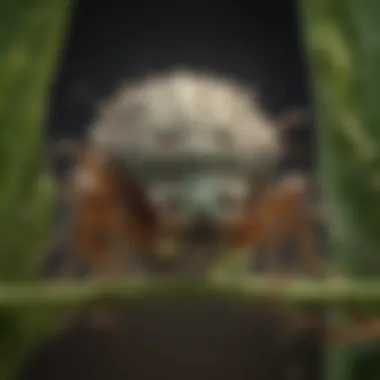
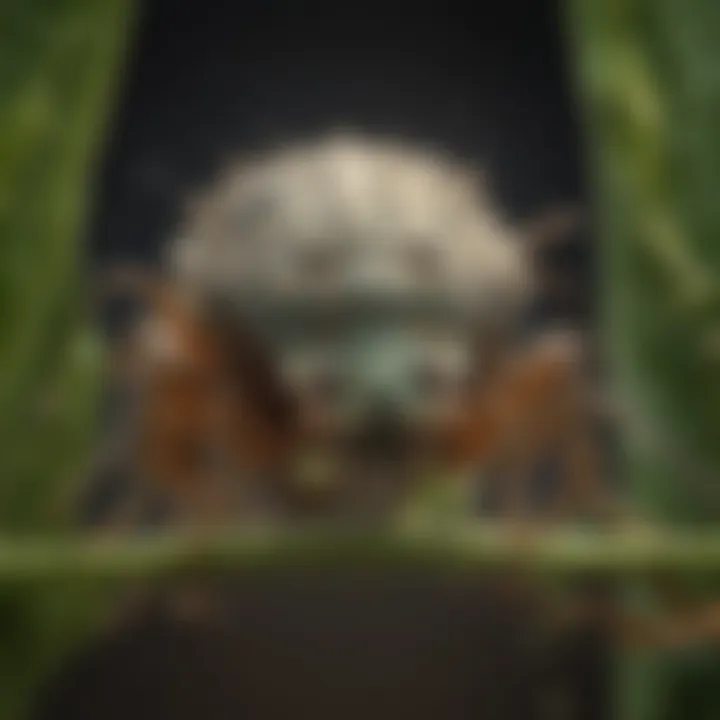
By approaching the topic with a scientific lens, readers can appreciate the ecological balance that stink bugs play while also safeguarding their homes from the challenges they present.
The Chemistry of Stink Bug Odor
The study of stink bug odor encompasses not just the unpleasant scent experienced when these insects are disturbed, but also the intricate chemistry behind it. Understanding the chemistry of stink bug odor is vital for homeowners and pest control enthusiasts alike. The odor serves multiple purposes in the life of the stink bug, including defense against predators and communication during mating. By comprehending the chemical compounds involved and the processes that generate these odors, individuals can better manage these pests and mitigate the olfactory discomfort they create.
Chemical Compounds Involved
Stink bugs release a variety of chemical compounds when they sense danger or need to communicate with other stink bugs. The primary source of this odorous secretion comes from specialized glands located in their thorax. Some of the key compounds identified include:
- Hexanal: This aldehyde contributes fruity and green scents, often compared to freshly cut grass.
- E-2-alkenal: This group of compounds can produce more pungent odors, making them noticeable to both humans and potential threats.
- Caryophyllene: A terpene that offers a woody aroma, often found in many plant-based fragrances, also plays a role in the stink bug odor profile.
Understanding these components helps in identifying specific types of stink bugs. Each species can vary in the blend of these compounds, leading to different olfactory experiences.
How Odor Is Produced
The production of stink bug odor involves a fascinating interaction between biology and chemistry. Stink bugs have specialized glands that synthesize these compounds. When the bug feels threatened, it activates these glands to release its odoriferous materials. The process follows a few distinct steps:
- Detection of Threat: Stink bugs possess sensory receptors that detect vibrations or predators nearby.
- Gland Activation: Upon sensing danger, they signal their glands to produce the specific chemical compounds.
- Release: The contents of the glands are then expelled, often in a mist, effectively spreading the odor into the environment.
This blend of compounds functions as both a deterrent and a warning signal. Predators often learn to avoid these bugs due to their strong scent, while fellow stink bugs can recognize and respond to these signals. Understanding this process can inform pest management strategies, allowing homeowners to devise effective responses to infestations.
Stink bug odor is not just a nuisance; it is a sophisticated means of communication and protection within their ecosystem.
By exploring the chemistry and mechanical processes behind stink bug odors, we gain insights that can lead to more informed management practices. This knowledge could potentially reduce infestations and the subsequent olfactory inconveniences caused by these insects.
Why Stink Bugs Emit Their Odor
Understanding why stink bugs emit their characteristic odor is crucial for comprehending their behavior and ecological role. The emission of these odors serves essential purposes that might be overlooked at first glance. As pests that can cause significant agricultural damage, knowing why they release such potent smells can aid in management and control methods.
Defense Mechanisms
Stink bugs possess a specific set of defensive strategies that involve odor production. When threatened by predators, they release a foul-smelling liquid that can deter potential attackers. This defensive spray contains distinct chemical compounds that are unpleasant and serve to confuse or expel intruders. Some studies suggest that this reaction may also signal other stink bugs in the vicinity about danger, facilitating group defense.
The effectiveness of this mechanism lies in its immediate impact. For many predators, the pungent odor can be a strong deterrent. It causes discomfort or even repulsion, making the stink bug less appealing as a target. Furthermore, the chemical makeup of the spray can cause eye irritation or a burning sensation in many animals. This adaptive advantage helps stink bugs reduce the risk of predation, increasing their survival chances.
Mating Signals
In addition to defensive purposes, stink bugs also utilize their odors in the context of mating. During the mating season, male stink bugs release pheromones that attract females. This chemical communication is fundamental for reproductive success, allowing mates to find each other in their environment.
The release of pheromones can provoke various reactions in other stink bugs. Female stink bugs are particularly responsive to these smells. By identifying and following these chemical signals, they can locate suitable partners. These mating odors signal the health and viability of the males, indicating genetic quality and fitness. This way, the chemical signals contribute to the population's overall reproductive health.
By exploring both the defensive mechanisms and mating signals associated with stink bug odor, we see a complex interplay of behaviors that play a vital role in their survival and reproduction. Identifying these functions not only enriches our understanding of stink bugs but also underscores the significance of their smell as a biological asset.
Types of Stink Bugs
Understanding the types of stink bugs is critical in managing their presence effectively in residential and agricultural settings. Each type possesses unique behaviors and ecological roles, as well as varying levels of impact on human environments. Recognizing these distinctions can help homeowners and pest management professionals implement targeted strategies to control infestations and minimize associated odors.
Common Species
Stink bugs belong to the scientific family Hemiptera, and there is a wide variety of speices that can invade homes. Among the most common are:
- Brown Marmorated Stink Bug (Halyomorpha halys): This invasive species is known for its distinctive brown color and shield-shaped body. It was first identified in the United States in the late 1990s and has since become a significant pest due to its rapid spread.
- Green Stink Bug (Chinavia halaris): Characterized by its bright green color, this bug primarily feeds on fruit and vegetable crops. It can cause direct damage to plants, making it a concern for gardeners and farmers alike.
- Common Stink Bug (Pentatomidae): This is a general term often used to refer to various stink bugs found in many regions. They can have varying colors, including green, brown, and even black.
Recognizing these common species helps in identifying not just their physical characteristics but also their habits. For instance, while the Brown Marmorated Stink Bug is mainly a nuisance in homes, it also poses a more significant threat in agricultural settings.
Geographical Distribution
The geographical distribution of stink bugs varies significantly based on the species. Some species, like the Brown Marmorated Stink Bug, have established populations in several countries across North America, Europe, and Asia. Others may be more localized. For example:
- The Green Stink Bug is commonly found throughout North America, often in gardens and crop fields.
- The Common Stink Bug can be found in various habitats, including forests, wetlands, and urban areas.
The awareness of stink bug distribution is vital for effective pest control management. By knowing where these bugs thrive, homeowners can take proactive steps to prevent them from entering their homes, such as sealing cracks or using insect screens.
In summary, understanding the different types of stink bugs and their geographical distribution allows for better preparedness and more effective strategies in dealing with infestations.
Identifying Stink Bugs
Identifying stink bugs is essential for homeowners and housewives alike. Knowing how to recognize these pests allows for prompt action to manage and control their presence. Differentiating between stink bugs and similar insects can prevent unnecessary panic and mismanagement. A clear understanding of their physical characteristics and behavioral traits aids in creating effective control strategies.
Physical Characteristics
Stink bugs possess distinct physical features that make them relatively easy to identify. Their bodies are usually shield-shaped, which sets them apart from other common insects. Adult stink bugs generally measure about half an inch to three-quarters of an inch in length. The coloration varies widely among species, ranging from brown to green. The most notable feature is the segmentation on their thorax, which can appear almost mottled.

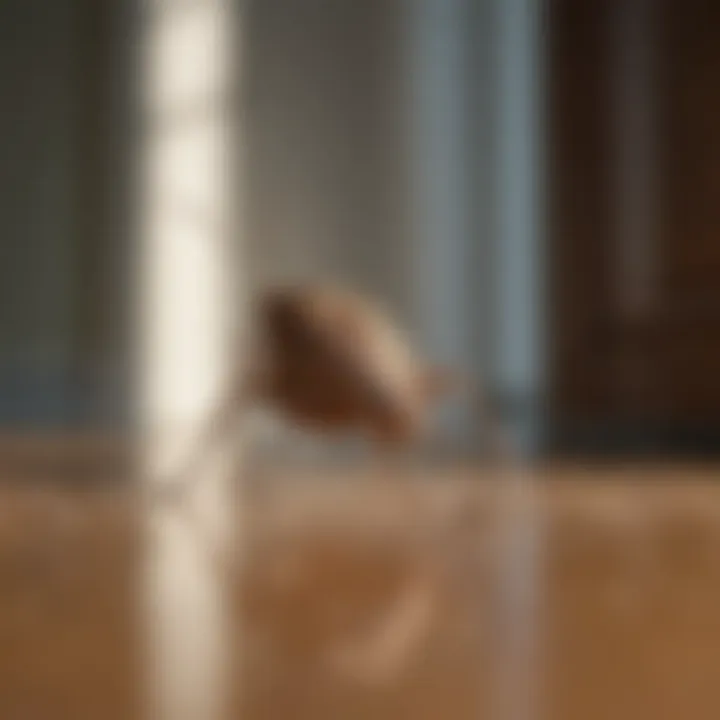
Examining other aspects such as the antennae and legs also is important. Stink bugs have long, slender antennae with four distinct segments, and their legs are typically long and thin. Their wings may also display a semi-transparent quality, which can be helpful for identification. Utilizing a magnifying glass can assist in spotting these traits without getting too close, as their smell can be strong and unpleasant.
"Identifying species is crucial for effective management. Not all stink bugs cause the same level of harm."
Behavioral Traits
Stink bugs exhibit specific behaviors that can also help in identifying them. One significant behavioral trait is their tendency to congregate in groups, especially in favorable environments such as homes during colder months. They often seek shelter in cracks and crevices. Recognizing this behavior can prevent an infestation from growing larger.
Moreover, stink bugs are typically inactive during the day, making their presence known mostly in the evening or at night when they become more active. This nocturnal behavior might prompt an observation of strange odors during evening hours, signaling their presence.
These insects also have a unique manner of feeding. They possess specialized mouthparts that allow them to pierce plant tissues. Watching for yellowing or wilting plants can indicate the presence of stink bugs nearby. Homeowners should pay attention to their gardens to avoid potential crop damage.
Impact on Human Surroundings
Understanding the impact of stink bugs on human surroundings is essential for several reasons. Stink bugs are not just a nuisance but can also lead to both economic and physical consequences for homeowners and agriculturalists alike. Their characteristic odor, often a deterrent, signifies deeper ecological interactions. Recognizing these insects’ influence in various environments can empower people to take appropriate action to minimize their presence and effects.
Effects on Homes
Stink bugs often invade homes, especially during the colder months when they seek shelter from harsh conditions. Once they find their way indoors, they may cause several problems:
- Odor: The smell produced by stink bugs, particularly when agitated, can persist and create discomfort in living spaces.
- Contamination: Their presence can lead to unsightly stains on walls and furniture, which can be difficult to remove.
- Increased Pest Activity: Stink bugs can attract other pests, complicating the homeowner's efforts for effective pest control.
To combat these issues, homeowners can implement preventive measures. Sealing cracks, using screens on windows, and utilizing insecticides specifically designed for stink bugs can help keep these bugs at bay. The importance of being proactive cannot be overstated.
Agricultural Implications
In agricultural settings, stink bugs present even more significant challenges. They are known to damage a variety of crops, leading to financial losses that can affect local economies. Here are key impacts:
- Crop Damage: Stink bugs feed on plants, which can lead to reduced crop yields. They insert their mouthparts and extract fluids from fruits, grains, and vegetables, often resulting in decay or poor quality.
- Economic Loss: Farmers may face substantial economic loss due to decreased harvests and the cost of managing stink bug populations. Effective pest management strategies are vital.
- Ecosystem Balance: Stink bug populations can disrupt local ecosystems. As they feed on crops, they can hinder the natural balance of pest populations. This indirectly affects pollinators and other beneficial insects.
In response to these agricultural challenges, farmers must consider integrated pest management strategies. This might include planting resistant crop varieties, using natural predators, and optimizing cultural practices. By acknowledging and addressing the influence of stink bugs on agricultural systems, better outcomes can be achieved that benefit both the environment and the economy.
To manage stink bugs effectively, awareness of their surroundings and behaviors is crucial for homeowners and farmers alike.
Mitigation and Control Strategies
Mitigation and control strategies play a crucial role in managing stink bug populations. Understanding these strategies aids homeowners in minimizing the negative impacts caused by these pests. The right mix of preventive measures and treatment options can significantly reduce the likelihood of infestations. Focusing on effective control can also enhance overall home comfort and protect against potential property damage.
Preventive Measures for Homeowners
Preventive measures are the first line of defense against stink bugs. Homeowners can take essential steps to deter stink bugs from entering their homes. Here are some practical tips:
- Seal Entry Points: Inspect windows, doors, and any cracks in walls. Use caulk to repair gaps, as stink bugs can fit through small openings.
- Use Screens: Install tight-fitting screens on windows and vents. This keeps stink bugs out while allowing fresh air in.
- Remove Attractants: Keep outdoor lights to a minimum during peak seasons. Stink bugs are attracted to light, so reducing outdoor illumination can limit their presence.
- Maintain Cleanliness: Regularly clean gardens and yards by removing debris and overgrown vegetation. Stink bugs are often drawn to untidy spaces where they can hide.
Treatment Options
When preventive measures are not enough, treatment options become necessary. Homeowners have both natural solutions and chemical treatments to consider.
Natural Solutions
Natural solutions provide an environmentally friendly way to manage stink bugs. These methods often involve the use of substances derived from plants or other organic materials. The key characteristic of natural solutions is their lower chemical impact, making them beneficial for homes with children or pets.
Examples of natural solutions include:
- Essential Oils: Using oils like peppermint or neem can deter stink bugs due to their strong smells.
- Diatomaceous Earth: This powdery substance damages the exoskeletons of insects on contact, leading to dehydration and death.
While natural solutions may be safer, it is essential to understand their limitations. They tend to require more frequent applications and may not be as effective during severe infestations.
Chemical Treatments
Chemical treatments are another option for controlling stink bug populations. These are typically more potent and can provide immediate results. Their key characteristic is the ability to target specific pests effectively.
Some chemical treatments include:
- Insecticides: Formulations containing active ingredients specifically aimed at stink bugs can quickly reduce numbers.
- Residual Sprays: These create a lasting barrier, protecting homes over time.
While chemical treatments can be effective, they also pose some disadvantages. Some chemicals may have adverse effects on non-target species, including beneficial insects. Moreover, there can be health risks if not used properly. It is crucial for homeowners to read and follow labels carefully.
In summary, control strategies require a thoughtful blend of preventive measures and treatment options. Homeowners must weigh the benefits and risks associated with each method to develop an effective management plan against stink bugs.
Myths and Misconceptions About Stink Bugs
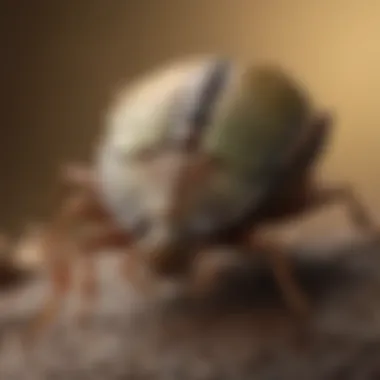
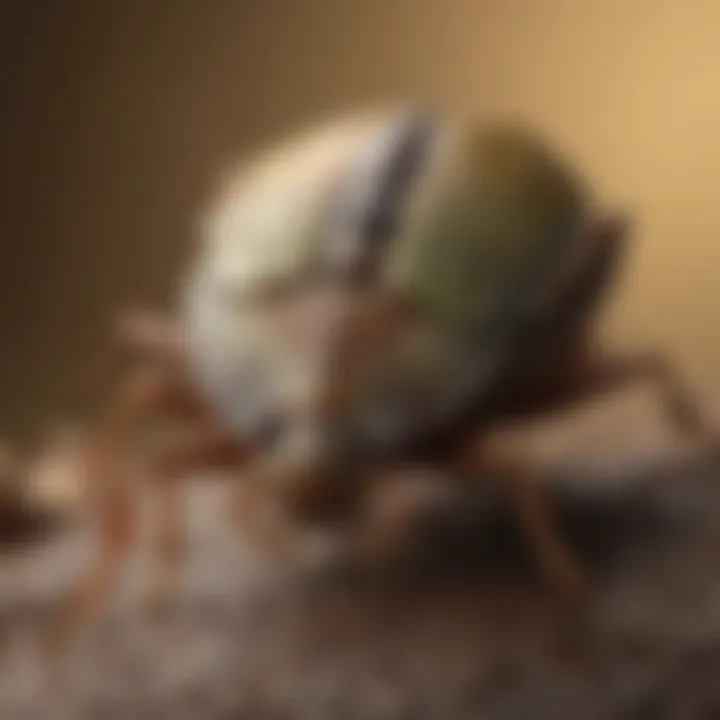
The presence of stink bugs in homes raises a variety of concerns, often accompanied by numerous myths and misconceptions. Understanding these can help homeowners manage their expectations and approaches regarding these pests. Through comprehensive dismantling of these fallacies, both the emotional and psychological burden that accompanies these insects can be lightened.
Knowing the truth about stink bugs also promotes better management strategies. For instance, believing that stink bugs are, inherently, destructive can lead to panic and inappropriate control measures. Thus, debunking common myths lays the groundwork for informed decisions, thereby offerin peace of mind. The following sections will clarify popular misconceptions about stink bugs.
Common Fallacies
- Stink Bugs Cause Significant Damage
Many believe stink bugs pose a serious threat to home structures or crops. While they can impact plants, their feeding does not usually lead to severe damage. Instead, their primary concern is as irritants rather than major agricultural pests. - Stink Bug Odor is Dangerous
Another common myth is that the odor emitted by stink bugs is harmful. In reality, while the smell can be quite unpleasant, it is not toxic to humans or pets. This misconception can lead to unnecessary panic during infestations. - Stink Bugs Only Emerge in Fall
There is a belief that stink bugs appear only in the autumn. However, they can be found throughout the warmer months, especially in areas with suitable food sources. They do take refuge indoors during cold weather but are not restricted to just one season. - They Are Not a Homeowner's Problem
Some homeowners might think stink bugs will not invade their spaces if they maintain cleanliness and proper house maintenance. However, this is misleading. Stink bugs can find their way into homes regardless of cleanliness, typically drawn by warmth or light.
Clarifying Facts
- Feeding Habits
Here is an important fact: stink bugs primarily feed on plant sap. Their feeding may cause cosmetic damage to fruits and vegetables, which can affect market value but not the overall health of the plant. For homeowners or gardeners, knowing their feeding habits can help in determining if action is necessary. - Olfactory Defense Mechanism
The odor emitted by stink bugs serves an essential purpose. It acts as a defense mechanism, deterring predators. Understanding this attribute helps in realizing that the smell is a natural evolutionary trait, rather than an immediate threat. - Year-Round Presence
While they do tend to congregate indoors during the colder months, stink bugs can be present throughout the year under the right environmental conditions. Acknowledging their active periods may assist homeowners in adopting timely preventive measures. - Management Systems
Effective methods exist to manage stink bug populations. Integrating practices like sealing entry points, monitoring outside areas, and employing various pest control methods can keep infestations at bay. Knowledge about control measures can empower homeowners to take proactive steps.
By addressing these myths and providing detailed clarifications, homeowners can gain a more rational perspective on stink bugs and their management. This understanding not only reduces anxiety but also encourages effective pest control strategies.
Health Concerns Related to Stink Bugs
In addressing the presence of stink bugs, it is essential to explore the health implications they carry. While often overlooked, these insects can pose specific risks to human health, particularly concerning allergies and respiratory conditions. Understanding these concerns helps homeowners take informed actions to minimize potential health issues.
Allergies and Asthma
Stink bugs can aggravate existing allergies and asthma. When these insects are crushed or disturbed, they release a pungent odor, which can elicit allergic reactions in sensitive individuals. This reaction may include symptoms such as sneezing, nasal congestion, or skin irritation. Moreover, the compounds released can irritate the respiratory system, potentially triggering asthma attacks.
For those already suffering from asthma, the presence of stink bugs can lead to increased inhalation of volatile organic compounds, exacerbating their condition. Individuals with underlying health issues should consider implementing preventive measures, especially during peak infestation periods.
Other Health Risks
Apart from allergy and asthma concerns, stink bugs do not transmit diseases to humans. However, their mere presence can become a nuisance that leads to stress and discomfort for homeowners. This discomfort can lead to increased anxiety and reduced quality of life, particularly in those who have a psychological aversion to insects.
In some cases, homeowners may resort to chemical treatments to eliminate stink bugs, which can introduce additional health risks. Exposure to certain chemical pesticides may result in adverse health effects. Therefore, it is important to choose safer, environmentally friendly pest control methods when addressing stink bug problems.
"Understanding health concerns related to stink bugs is crucial for effective management and prevention strategies."
The Role of Research in Stink Bug Management
Research plays a crucial part in managing stink bug populations and understanding their behavior. It equips homeowners and pest control professionals with knowledge necessary to combat infestations effectively. Stink bugs, particularly the Brown Marmorated Stink Bug, can destroy crops and invade homes, resulting in economic and environmental challenges. Studying their habits and responses to various control methods helps to develop strategies that minimize their impact.
Two specific areas of focus in research include behavioral studies and the development of effective pest control measures. Behavioral studies allow researchers to observe the conditions that attract stink bugs to certain environments. Understanding their life cycle can lead to targeted approaches in pest management.
By knowing when stink bugs are most active, homeowners can take proactive steps before they become a significant issue. Such insights also assist agricultural sectors in safeguarding crops, which can suffer greatly due to these pests.
Moreover, ongoing research captures changes in stink bug behaviors as well. As urbanization continues, stink bug patterns also shift. Staying updated allows communities to adapt their management techniques. Ultimately, this enhanced understanding translates to practical applications in pest control, bolstering both preventive measures and treatment options.
Current Studies
Current studies on stink bugs are diverse and focus on multiple aspects of their behavior and ecology. A significant area of investigation is the chemical ecology of stink bug odor, examining how these insects use scent to communicate and mate. Researchers analyze the volatile compounds released during mating and defensive actions, which could lead to more effective traps or lures.
- Studies might include:
- Analyzing pheromone production to attract or repel stink bugs.
- Evaluating the effectiveness of natural predators or parasites in controlling stink bug populations.
Another vital research area is investigating the impacts of climate change on stink bug distributions. Changes in temperature and weather patterns could alter lifecycle stages and habitat preferences, making it essential to understand these dynamics.
Future Directions of Research
Looking ahead, future research on stink bugs could benefit from the integration of technology and ecological approaches. For instance, utilizing remote sensing technology can provide insights into stink bug movements and populations across different environments. With this data, more dynamic pest control measures can be developed.
Additionally, interdisciplinary research combining entomology with agricultural science could yield more sustainable management practices for stink bugs. Potential directions could include:
- Developing organic repellents derived from plants known to deter stink bugs.
- Exploring community engagement strategies to inform homeowners and farmers on best practices.
Also, as the science of pest control evolves, continuous evaluation of existing methods is key. Research can aid in refining chemical treatments, ensuring they are effective while minimizing harm to beneficial insects and the environment.
In summary, the role of research in stink bug management is essential. It offers meaningful insights that enable informed decisions, resulting in more effective control strategies and a better understanding of this pest's ecology. Homeowners, farmers, and researchers must collaborate to advance our knowledge and improve pest management outcomes.
End
In this article, we explored the multifaceted issue of stink bug odor, revealing its significance and implications. The importance of understanding stink bug smell cannot be understated. It aids homeowners in recognizing the presence of these pests by identifying their distinctive scent. Furthermore, recognizing the factors behind this odor can profoundly influence how one approaches stink bug infestations in homes.
Recap of Key Points
To summarize the main findings discussed in this article, we covered:
- The biology behind stink bugs, including the chemical compounds responsible for their odor.
- The reasons stink bugs emit this smell, particularly emphasizing defense mechanisms and mating signals.
- Common species of stink bugs and their geographical distribution, which helps in identification.
- The impact of stink bugs on human living spaces and agriculture, signifying their ecological role and nuisance status.
- Effective mitigation strategies for homeowners and treatment options available.
- The myths and truths surrounding these insects, clarifying public misconceptions.
- Health concerns related to stink bugs, particularly the potential risks to allergies and asthma sufferers.
- The ongoing research efforts directed towards effective stink bug management and future directions in pest control methods.
Final Thoughts on Stink Bug Management
In light of all these considerations, managing stink bugs is not merely a matter of personal comfort but also involves a broader understanding of their ecological impact. Homeowners are encouraged to adopt a proactive approach, implementing preventive measures tailored to minimize infestations. Knowledge is key. By staying informed about the characteristics and behaviors of stink bugs, one can significantly reduce the chances of an outbreak. Regular inspections and understanding how to respond effectively can make a notable difference.
"Knowledge empowers homeowners to take control against unwelcome pests, transforming a reactive approach into a proactive strategy."



